“Added Value”
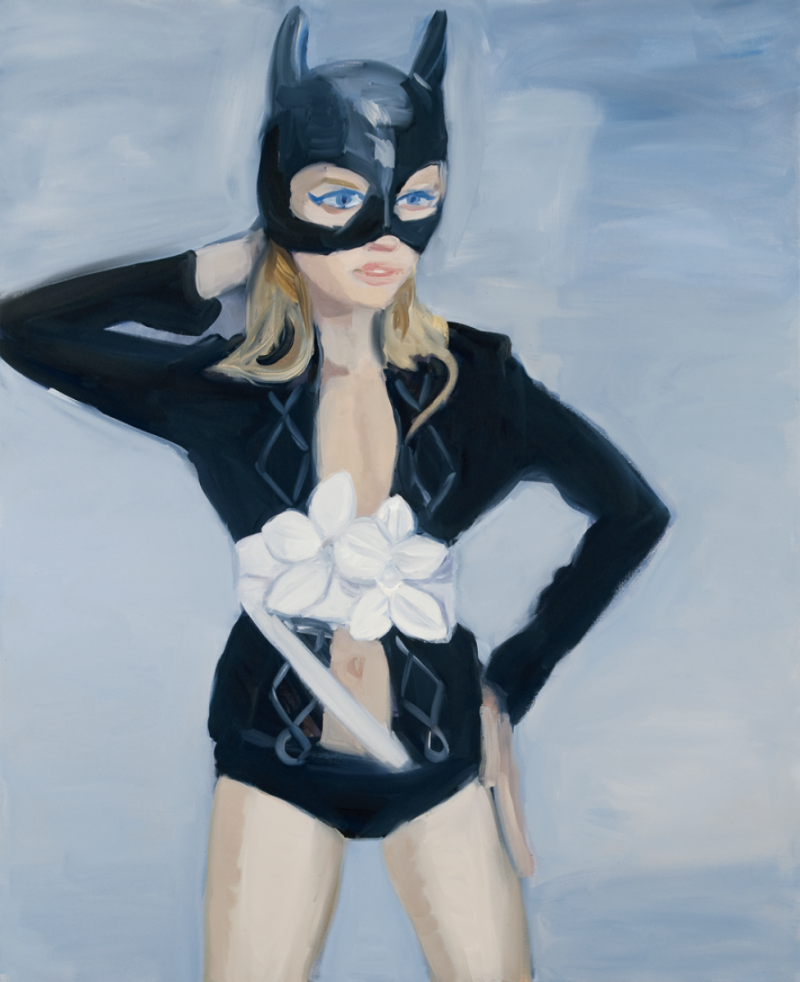
Janet Werner, Cat Girl 2, 2009, oil on canvas, 55 x 45”. Courtesy of the artist.
It might seem as if the Platform Centre for Photographic + Digital Arts is tweaking its mandate with an exhibition that focuses on painting. But this smart, tightly edited show uses painting to examine the assumptions of photography and photography to examine the assumptions of painting. Bringing together four Canadian-born artists with strong conceptual concerns, and referencing fashion photography, news footage, personal snapshots and vacation mementoes, “Added Value” looks at the way visual images circulate, transform and resonate in our information-saturated culture.
Early photographers emulated painting with pictorial effects. Painters, from the Impressionists to the photorealists, have returned the compliment by incorporating elements of photography into their art. Historically, the sibling bond between painting and photography has been sometimes supportive, sometimes competitive, always close. Curator Lisa Wood is well positioned to investigate this connection: she works as a painter, but also served as Platform director from 2005 to 2007.
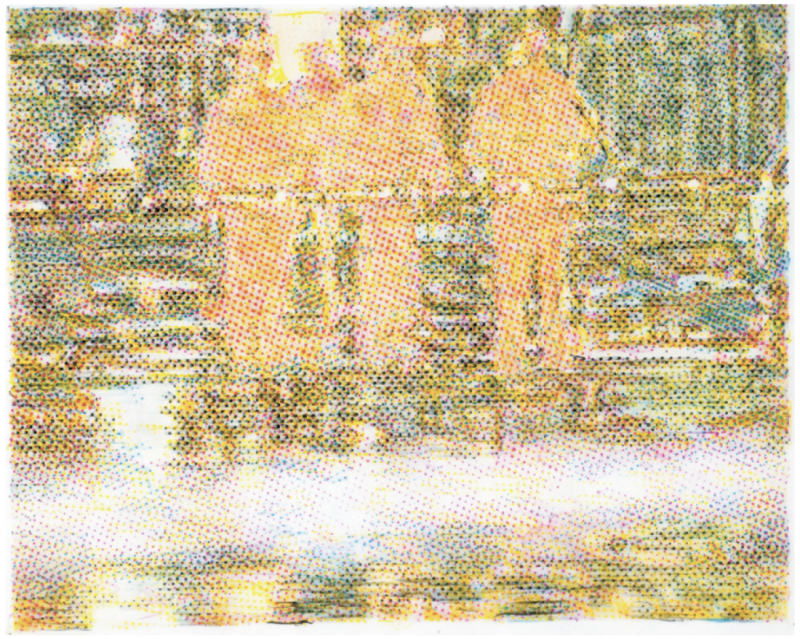
Stephen Andrews, Orange Alert (POV Series), 2005, crayon rubbing on Mylar, 7 7/8 x 9 7/8”. Courtesy of Paul Petro Contemporary Art Gallery, Toronto.
San Francisco-based Chris Dorosz offers four rigorously beautiful pieces. From a distance they could pass as flattened-out Op Art abstractions, but up close they reveal a sensuous surface of industrial staples and poured paint. At still another level, they read as patterns of pixels, with repeated uniform units that, taken together, seem to hover on the edge of photographic subject matter. In Yellow and black make green, 2006, and 6 PM, the swells of colour suggest fragments of photos blown-up. But Dorosz is playing with the paradox demonstrated in Antonioni’s 1966 film Blowup: As the photographer enlarges an image to get more information, the information becomes less precise. Day into Night appears to be a contact sheet of personal snapshots, with white and grey figures interacting obscurely against a dark ground. The arrangements are ghostly and indistinct, but it’s hard to resist the human urge to construct a storyline, to speculate about whether these people are fighting or kissing or drinking. Dorosz teases us about our need for narrative, while consoling us with the gorgeous palpability of his paint.
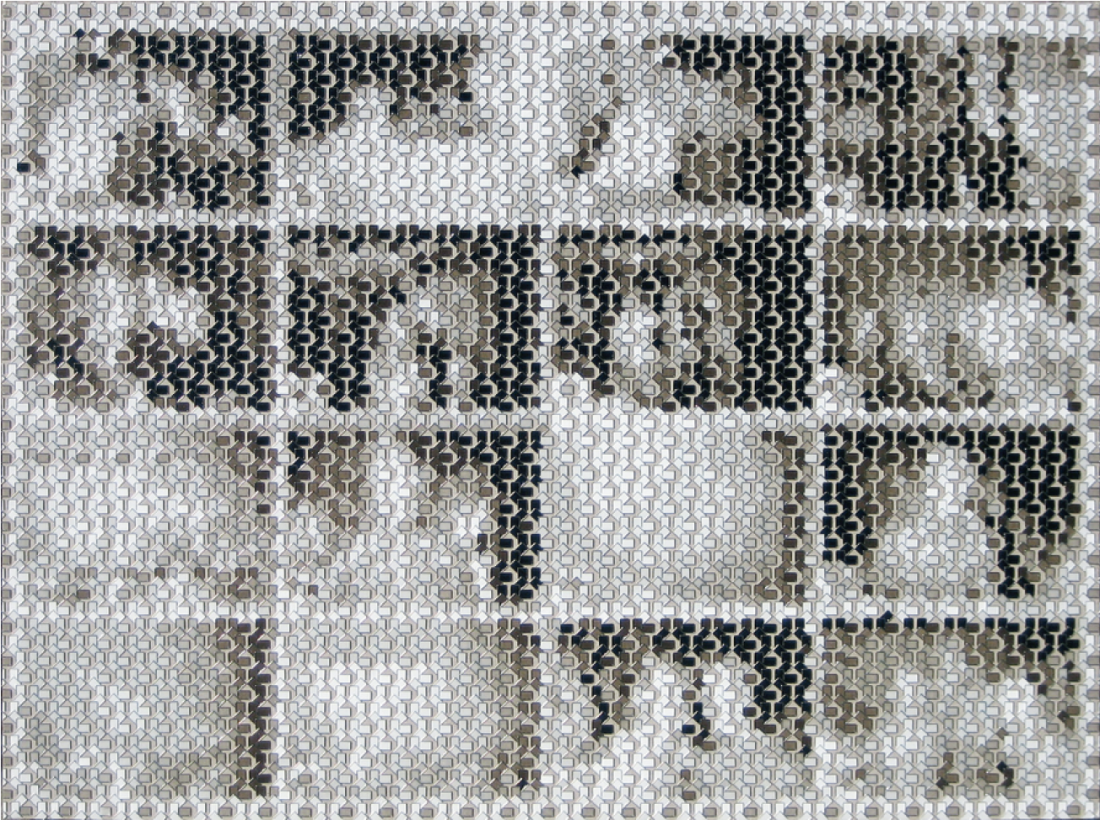
Chris Dorosz, Day Into Night, 2007, staples, acrylic gel medium, pigment on linen, 36 x 48”. Courtesy of the artist.
Janet Werner, a Winnipeg-born painter now based in Montreal, uses paint to copy fashion photographs. In these oil-on-canvas works, Werner seems to zero in on the angular poses and haughty, confrontational beauty of supermodels. But the painting is deliberately “off”—the composition slightly skewed, the proportions a bit unsettling, the cropping a little arbitrary. Werner’s “failed paintings,” as she calls them, are in fact killingly effective in disrupting the shiny, seamless surfaces of billboards and magazine layouts. In a work like Red Head, Werner admits to the power of consumerist desire so symbiotically served by glamour photography, but she also subverts it with the artful awkwardness of her painting.
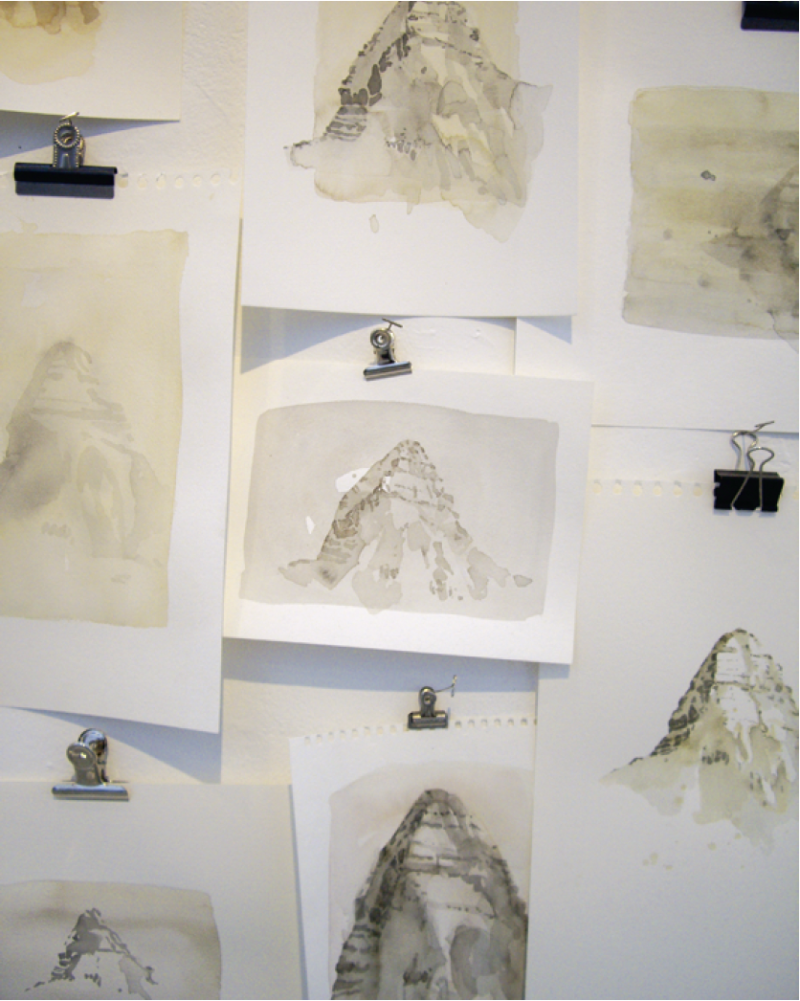
Stephanie Aitken, 19 Views of Assiniboine (detail), 2008, watercolor on paper, dimensions variable. Courtesy of the artist and PLATFORM centre for photographic + digital arts.
Stephen Andrews’s Yesterday’s News Remembered Today, an oil and crayon rubbing on Mylar, is based on a low-res Internet image taken from a drawing that is in turn based on an Internet image supplied by BBC news. By making a copy of a copy, the Toronto-based artist examines what might be lost in the process of mediation and replication, as complex political events are reduced to iconic visual images that are circulated through the digital world. The image is fuzzy, built up through a delicate chiaroscuro of pixels. But it is also readable at a basic level, suggesting that we are now so inundated with visual information that we need only minimal indicators to call up elaborate scenarios of terrorism and surveillance, civil unrest and military force. In other pieces, Andrews aestheticizes images from television and Internet news, boosting colours and softening outlines. These works question how news footage operates: does the repetition, acceleration and ubiquity of information technology sharpen our awareness of the world or diffuse it?
Vancouver artist Stephanie Aitken overturns the venerable tradition of en plein air landscape painting by working not just from photographs but from found photos that have been snapped by tourists in the Rocky mountains. The title of Aporia is a reference to unresolvable contradictions: Aitken is caught between the grand history of the alpine sublime and the mechanically reproduced boundaries of 4 x 6-inch photographs. In Aporia and Another Mountain, she transfers a photographic image to linen and then paints over it in oil, sometimes hewing close to photographic representation, at other times giving way to the luscious, dripping materiality of paint. In 19 Views of Mt. Assiniboine, Aitken’s small, quick watercolour sketches, all based on one black-and-white photograph, are casually pinned to the wall like snapshots. Again, these works blur the line between the painterly and the photographic.
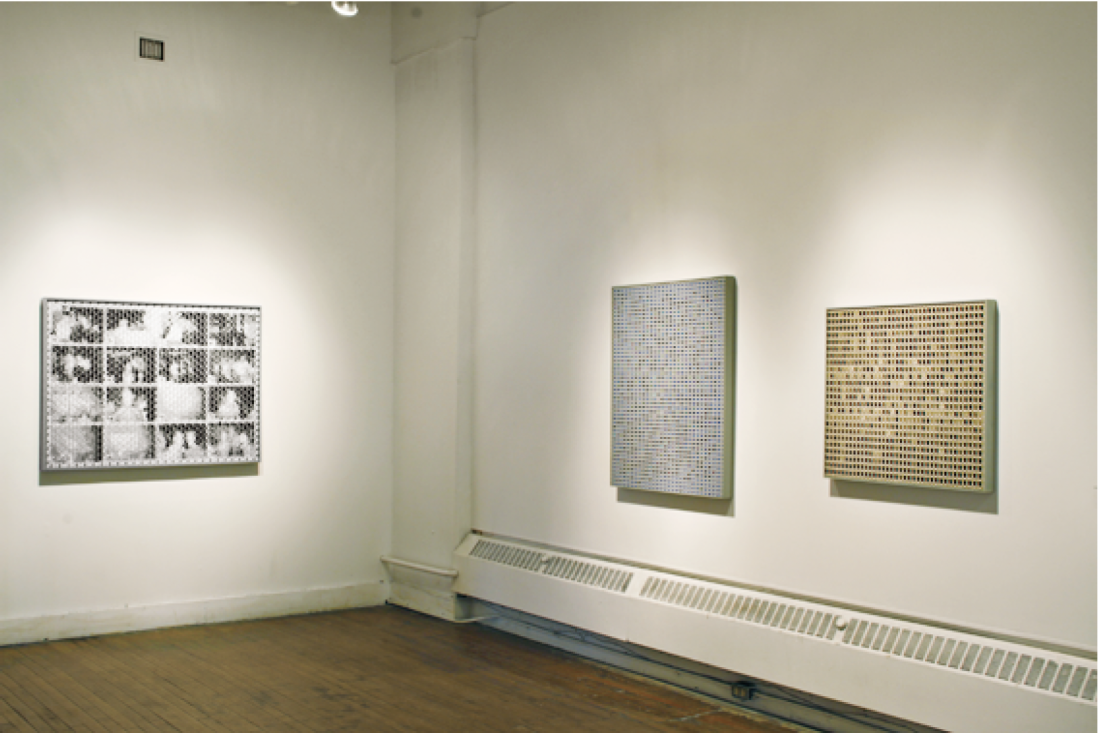
Installation view of “Added Value” at PLATFORM centre for photographic + digital arts, Winnipeg, 2009. Courtesy PLATFORM centre for photographic + digital arts.
As Wood points out in her curatorial statement, there is a tendency to view photography as objective and painting as subjective, pixels as real and paint as fictive. The artists in “Added Value” scramble these polarized categories, encouraging fresh readings of both mediums. ❚
“Added Value” was exhibited at Platform Centre for Photographic + Digital Arts in Winnipeg from November 6 to December 19, 2009.
Alison Gillmor is the Pop culture columnist for the Winnipeg Free Press and often writes on visual arts and film.

